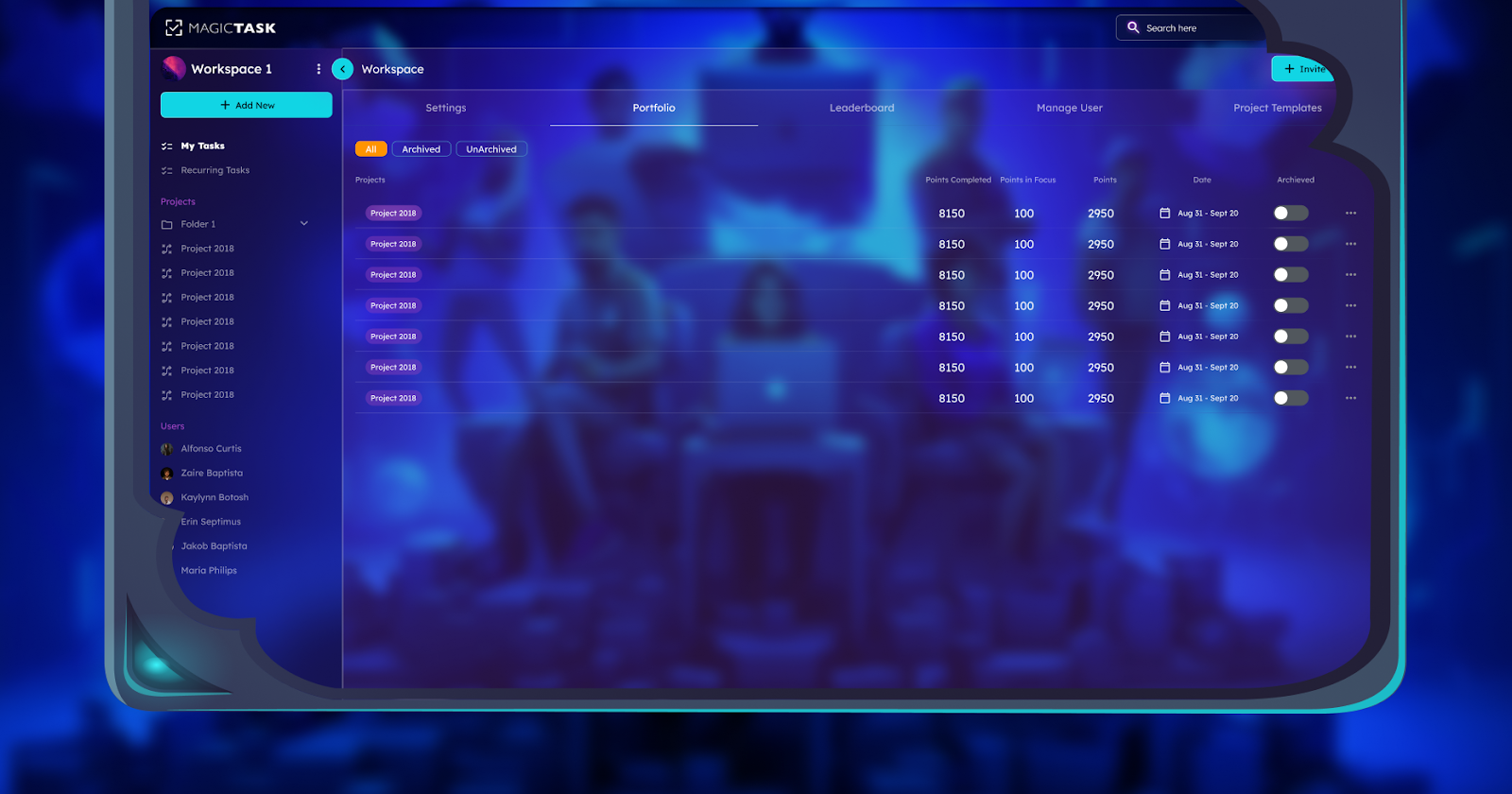How to Set Team Goals to Maximize Efficiency and Productivity

It’s difficult for workers to achieve company goals when they don’t understand their respective roles.
Sadly, the majority of employees sail in this boat. According to Gallup’s research, in which they questioned company employees globally, only about 50% of them “strongly agree” that they know what’s expected of them at their workplaces.
One of the primary responsibilities of a team leader is to assist their employees in setting and achieving goals. However, as the above study reveals, they aren’t handling this responsibility efficiently.
To help you out, this article provides a detailed overview of team goal setting. Read on to learn how you can set goals for your team.
The Importance of Goal Setting in Teams
Before we look at the ‘how’, it’s important to highlight the benefits of setting team goals. These perks include:
Facilitates Easy Collaboration
One reason why leaders should set team goals is that it enhances collaboration. It encourages employees to share skills with their colleagues and help each other when faced with challenges. This leads to a strong comradeship that enables the company to succeed.
Offers Direction and Purpose
Team objectives act as a roadmap, ensuring employees have a clear sense of direction.
Communicating the desired results enables each member to understand their roles and contributions. This, in turn, improves their work performance. Research shows that setting team goals yields 20% to 25% improvement in work performance.
Improves Employee Satisfaction
Accomplishing the personal goals you set in life elicits a sense of joy and pride. Team goals are not any different.
When team members accomplish the goals you set for them, they feel more fulfilled. This improves employee satisfaction, which is linked to other benefits like reduced absenteeism and higher retention rates.
Identifying Team Goals That Maximize Efficiency
If you’re a team leader, you’ve probably thought of numerous objectives you would like your team to achieve. However, having multiple goals doesn’t automatically mean your team will achieve them. And, if you try to force them on your team, you’ll likely be disappointed.
A better way to approach this is to work with the members to identify realistic, achievable goals. This is how you should go about it:
Examine the Company’s Objectives
Before diving into the specifics of team goals, it’s essential to have a clear understanding of the company's overarching objectives. These are the primary targets the organization aims to achieve, such as increasing revenue, enhancing customer satisfaction, expanding market share, or innovating new products. These goals provide a foundation upon which team goals are built, ensuring alignment and coherence across all levels of the organization.
Brainstorm Ideas With Your Team
Once you have a clear understanding of the company’s overarching objectives, the next step is to involve your team in the goal-setting process. Brainstorming with your team ensures that the goals are realistic, achievable, and aligned with both the company’s needs and the individual aspirations of team members. This collaborative approach not only fosters a sense of ownership and commitment but also brings diverse perspectives and innovative ideas to the table.
Align Team Goals With Individual Goals
After gathering feedback from everyone, identify team goals that align with the members’ aspirations.
For instance, assume that the company’s core objective is to improve its online presence.
One of your team members wishes to become a successful influencer and already has a large following on their social media accounts.
Instead of hiring an external social media manager, you can assign that particular role to your team members. This way, they can boost the company’s online presence while simultaneously honing their influencing skills (more on goal alignment later in the article.)
Tools and Techniques for Setting Team Goals
There are several tools and methods you can use to establish team goals. The most commonly used are:
SWOT Analysis
This acronym stands for Strengths, Weaknesses, Opportunities, and Threats. It helps you identify suitable objectives by analyzing the company’s strengths and weaknesses. Follow these steps to set team goals using SWOT:
- Sketch your SWOT matrix - draw a four-section grid and label the four sections: strengths, weaknesses, opportunities and threats.
- Brainstorm ideas to fill each quadrant - With the help of your team members, evaluate the organization’s strengths and weaknesses. The remaining quadrants (O and T) deal with external factors. So, analyze your industry to identify market gaps and potential challenges.
- Form action plans - Having identified the four factors, it will much easier to determine the next steps. What actions can your team take to overcome weaknesses or seize available opportunities? These actions represent the team’s goals.
Gamification

If the SWOT analysis feels complicated, gamification is an alternative approach for team goal setting.
This simply means integrating gaming elements into the goal-setting process. Using such a technique encourages employee engagement, and boosts motivation and productivity. Here’s how to go about it:
- Identify core objectives - Using the tips mentioned earlier, identify the main goals. Do you wish to increase company sales? Or, perhaps, improve customer service?
- Choose a gamified task/project management tool - The next step is to select a gamified task/project management tool. Ideally, the platform should fit your goals and easily integrate into your business workflow.
- Develop challenges - Look for challenges that correspond to the team’s goals. These activities should be equal parts fun and challenging. The idea is to encourage participation of the entire team.
- Identify meaningful rewards - Choose suitable rewards that will motivate your team. These can be extra vacation days, gift cards, or opportunities for career development.
Are you thinking of setting your team’s goals using this approach? If so, consider using MagicTask.
The tool makes goal setting easy and fun by incorporating gaming features. You earn points whenever you create or assign tasks to team members, and team members earn points by completing assigned tasks.
An added bonus of using this tool is that it makes goal-monitoring management feel like child’s play. You can track your members’ to-do list items and provide feedback accordingly.
Setting SMART Team Goals
Regardless of the tool you use, there are a few points you should keep in mind when setting team goals.
To be more specific, aim to set SMART goals. This acronym represents specific, measurable, achievable, relevant, and time-bound goals. Let’s look at each of these aspects in more detail:
- Specific: state the particular result you’d like when you achieve the goal, e.g. increase social media following by 30%
- Measurable: whenever possible, choose goals whose progress or success can be quantified.
- Attainable: while it’s good to be ambitious, set goals that your team can achieve.
- Relevant: the goal should correspond to the firm’s vision and values.
- Time-based: develop a timeframe for accomplishing the specified goals.
Aligning Team Goals with Individual Aspirations
By now, you should have a solid understanding of how to identify goals for your team. However, it’s a bit more complicated than it sounds. That’s because you also have to ensure that team goals align with those of individual team members.
This alignment ensures that every individual’s objectives are in sync with the organization's wider mission and vision. It also means that every team member knows how their roles contribute to the business’s success. So, why is goal alignment so crucial?
1. Improves Employees’ Motivation
One benefit of goal alignment is that it motivates employees by giving them a sense of purpose. A vivid understanding of how their roles contribute to the firm’s success motivates them to work on the team's goals.
2. Boosts Productivity
With greater motivation, it’s not surprising to learn that goal alignment also improves productivity. According to Gartner, it can increase by as much as 22%.
3. Easier to Review Employees’ Performance
Aligning goals allows you to create a framework for reviewing individual employee performance. It helps you to figure out what success means for every team member. This way, you can monitor their progress and offer relevant insight and support.
The perks of aligning team goals with individual member goals are clear. The only question left is, how do you achieve this alignment? Here are a few tips that might help:
Communicate company goals from the top down
The role of the CEO is to relay the company’s mission and vision to the executives.
Once they do, it’s your responsibility as a team leader to communicate this information to your team. This does not mean relaying the same message verbatim. Instead, you should translate how this information applies to your department and individuals.
Acknowledge individual wins
Another way to achieve goal alignment is to celebrate individual wins. If a team member makes a significant contribution, acknowledge them. This helps them feel valued, hence, boosting their motivation.

Monitoring and Measuring Goal Progress
Every once in a while, it’s important to evaluate your team’s performance. This will help you know their progress towards achieving goals. Plus, it can shed light on team members’ strengths and weaknesses. Here are a few recommendations on how to do this:
Monitor Key Performance Indicators (KPIs)
There are a couple of metrics you can use to evaluate your team’s performance, such as:
- Output quality - Start by assessing the consistency of results across the board. Is each team member delivering premium-quality work?
- Client satisfaction—Soliciting feedback from customers can also illuminate team members' performance. If possible, ask clients to rate their experience on a scale of 1 to 10. This will tell you whether team members are delivering excellent or subpar services.
- Error recurrence - There’s nothing wrong with making mistakes. However, this is not an excuse for employees to repeat errors. If one of your team members constantly makes the same mistake, it means they’re not paying attention, and it reflects poor performance.
Assess Attendance and Completion
You can also assess your team’s performance based on their absenteeism and completion rate.
A team member who is constantly absent affects the team’s efficiency in accomplishing goals. Similarly, one who submits projects past the deadline compromises the team’s workflow.
On the other hand, workers who are always present and complete their projects within the specified timeframes boost the team’s performance. This also shows they understand their respective roles in the team’s dynamics.
MagicTask can also help you monitor your team's progress. It contains an in-built analytics module, which uses several KPIs to show each member’s input. As such, you’ll be able to see the best- and worst-performing members by checking their daily, weekly, or monthly MagicTask points.
Also Read: How to Use Task Management Tools to Track Your Goals
Conclusion
Setting and communicating team goals is vital for a company’s overall success. It gives employees a sense of purpose and direction, thus, improving their efficiency and productivity. Besides, several tools are available to help you set team goals. You can use a SWOT analysis, gamification, and backward goal-setting, among others.
Whichever approach you use, be sure to set objectives that are specific, measurable, realistic, and relevant to the organization. It’s also wise to consult your team when setting goals. This way, you can set up ones that benefit the company and align with the ambitions of the team members.



